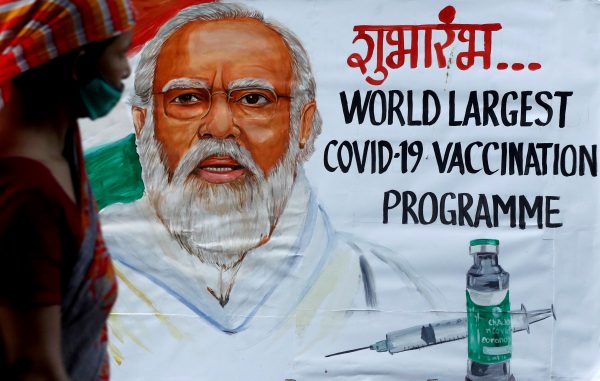There were numerous reasons for the Cabinet reshuffle, chiefly the urgent need for reputation management. The government’s reputation has suffered over the past year due to its poor management of the COVID-19 pandemic, leading to loss of lives and widespread misery. The already suffering economy took another blow — the most visible sign being job losses.
As a result, Modi’s popularity has dropped, but there is no challenge to his leadership either from within his party and the alliance he leads, or from the weak opposition. Yet, political perceptions of the ruling Bharatiya Janata Party (BJP) are in the doldrums after it failed to win the state election in West Bengal despite a no-holds-barred election campaign or to put up a fight in state elections in Tamil Nadu and Kerala.
The ministerial reshuffle was aimed at preparing for elections in seven more states before Modi faces India’s next parliamentary election in 2024. Modi chose several new ministers from the key state of Uttar Pradesh and his home state of Gujarat. He also inducted more lawmakers from the ‘other backward classes’ — a term used to classify socially and educationally disadvantaged groups — in an attempt to eliminate the widespread impression that BJP serves the upper castes and upper and middle classes.
Yet, 70 of the 78 ministers are millionaires with self-declared assets ranging from Rs 10 million (US$134,000) to Rs 37 billion (US$498 million). According to a study by the Association for Democratic Reforms (ADR), the new entrants included a maharajah (prince) of a former kingdom, a media mogul and several entrepreneurs. The ADR also revealed that 24 of the 36 new entrants have criminal cases filed against them. Electoral reforms on both these counts have been systematically scuttled by governments and by political parties.
The biggest surprise of Modi’s reshuffle was his elimination of 12 ministers. The handling of the pandemic claimed some ministerial casualties. The most notable case was Health Minister Harsh Vardhan. It would be unfair to blame the mismanagement of the pandemic entirely on one minister. ‘It is hardly a secret that the government is driven by the Prime Minister’s Office, not by individual ministers … Ministers today essentially play the role of implementers’, writes Neerja Chaudhary.
Vardhan is simply a fall guy for the failure. But there is no overt admission of the failure — rather, pandemic management has been touted as an ‘achievement’, and to quote Home Minister Amit Shah, the result of ‘proper, prior planning’. Any criticism is seen as ‘anti-national’ and has even invited sedition charges. Modi entrusted the critical task of Health Minister to Mansukh Mandaviya, a junior politician from Gujarat with no experience handling a major portfolio and no relevant academic qualifications to justify the choice.
Santosh Gangwar was dropped as labour minister ostensibly due to the adverse publicity India earned abroad after COVID‑19‑induced mass migration. Confusion over the closure of educational institutions and the holding of examinations apparently caused the downfall of former education minister Ramesh Pokhriyal.
More significantly, Modi dropped Ravi Shankar Prasad. As the minister of law and justice he shepherded the government through many legal and constitutional issues and tussles with the judiciary. And as minister of information technology, Prasad was in disputes with global social media platforms Facebook and Twitter regarding ‘toxic’ anti-government discourse. But it is unlikely that Prasad’s aggressive approach in dealing with these platforms made Modi ‘sacrifice’ him to appease the global media giants.
Prasad not only defended the government, but also attacked opposition parties regarding various political issues on the party’s social media platforms.
The sacking of big names such as Prasad, who are also old functionaries of Rashtriya Swayamsevak Sangh (RSS) — a Hindu nationalist organisation to which Modi and a vast majority of his ministers and lawmakers belong — has fuelled speculation about differences between Modi and the RSS. The latter wants to see its politico-cultural agenda implemented, while Modi cannot ignore India’s development if he is to show results as an administrator.
The RSS is generally a closed club that does not publicly express its differences. Yet, analysts have discerned the expression of differing views by RSS chief Mohan Bhagwat on some of the key actions and decisions of the Modi government. For instance, Bhagwat labelled the management of the pandemic ‘a collective failure’.
Modi also inducted several retired government officers considered close to him, ostensibly at the expense of the party functionaries. At the same time, the BJP itself admitted several people from other parties. This ‘realpolitik’ has caused discomfiture among party loyalists and the RSS perceives it as dilution of its ideological agenda.
Only time will tell if this situation might develop into a tussle between the Modi-led BJP and the RSS and what implications this could hold for Indian politics.
Mahendra Ved is President of the Commonwealth Journalists Association.

